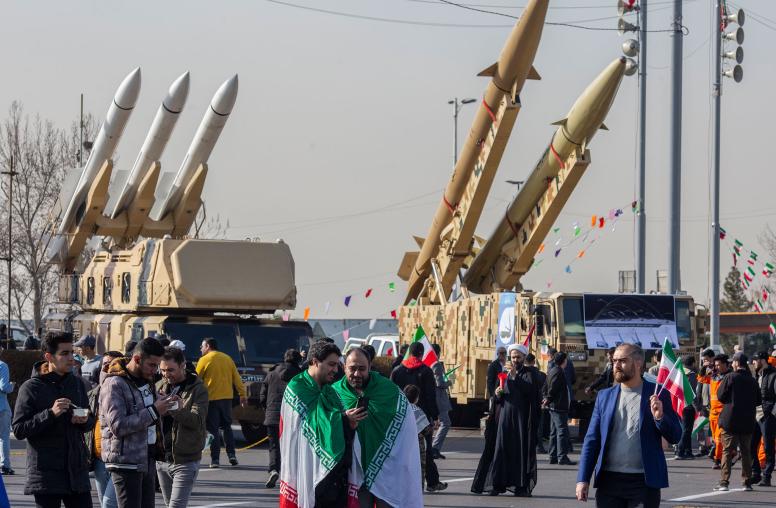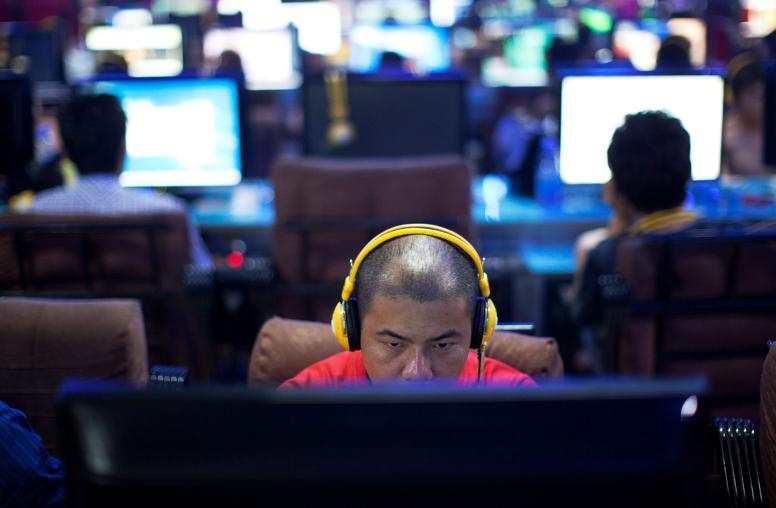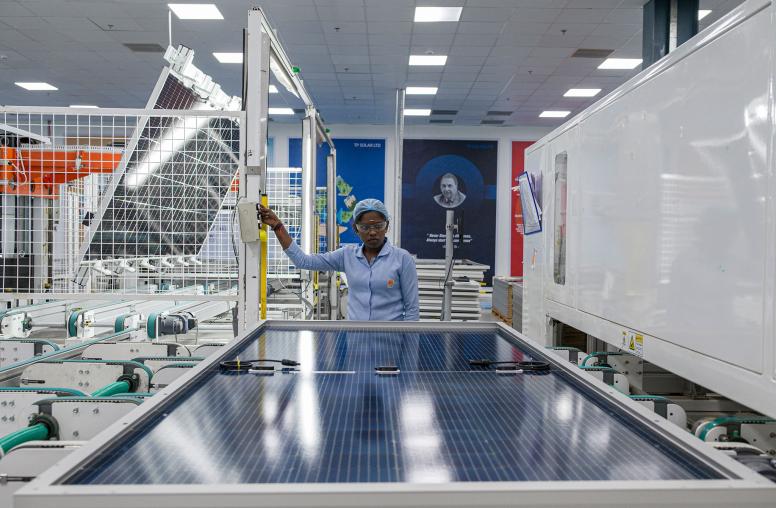The United States and China: Who Changed the ‘Status Quo’ over Taiwan?
Washington and Beijing need to get beyond trading accusations if they are to de-escalate tensions and stabilize the situation in the Taiwan Strait.
Taiwan has been the perennial problematic issue in U.S.-China relations for decades. President Biden’s comments during a recent trip to East Asia put that in stark relief. When asked if the United States would be willing to “militarily defend” Taiwan if China were to invade, Biden said, “Yes, that’s the commitment we made.” Administration officials later appeared to walk back the president’s comments. But Beijing reacted forcefully, conducting military drills close to the island and with numerous Chinese officials condemning the comments. Most recently, at the Shangri-La Dialogue earlier this June, Chinese Defense Minister Wei Fenghe warned that the People’s Liberation Army will “fight to the very end” if Taiwan dares to “secede” from China. Beijing’s vociferous reaction to Biden’s comments underscores how contentious the Taiwan issue remains and how easily tensions can flare.

A Decades-Long Point of Contention
Washington and Beijing have never been in complete agreement on the status of the island. Beijing considers Taiwan a holdover from the Chinese civil war of the 1940s and the island as the final piece of territory to be unified with the mainland to achieve what General Secretary of the Chinese Communist Party Xi Jinping has dubbed “the great rejuvenation of the Chinese nation.” Meanwhile, Washington has long viewed Taipei as a staunch U.S. partner and, in recent decades, as a small but thriving democracy living next door to a massive, muscular and threatening communist dictatorship.
Over the years, the United States and China, at best, have agreed to disagree, setting aside the seemingly intractable issue in order to move forward with what both sides saw as a mutually beneficial bilateral relationship. This was certainly true at key junctures, including in 1972, when the two countries issued the Shanghai Communique — a pledge for both nations to work toward formal diplomatic relations — at the conclusion of President Richard Nixon’s historic visit to China. Because the negotiators found it impossible to agree on common language related to Taiwan, they resorted to separate U.S. and Chinese statements within the same document.
Despite periodic crises and tensions over Taiwan in the decades since, the United States and China have tended to see the judicious handling of the bilateral relationship as a higher priority than resolving the status of the island. As a result, Washington and Beijing have been focused on keeping the Taiwan issue manageable rather than pressing to resolve it. This approach was workable during the 1970s and 1980s but has proved more difficult since the 1990s.
Moreover, in recent years, the issue has become increasingly challenging and contentious, particularly as U.S.-China relations have dramatically deteriorated over the last decade. Indeed, in 2022, Taiwan appears to be the most plausible location and conceivable spark for a military confrontation between the United States and China. Why?
Why Taiwan has Re-emerged as a Flashpoint
Taiwan has re-emerged as a flashpoint in U.S.-China relations for three fundamental reasons. First, the Taiwan issue was never fully resolved and the two sides attempted to set it aside to be delicately and pragmatically managed over time. Second, despite such attempts, Taiwan was never truly set aside and has long loomed as the central issue in U.S.-China relations. Exacerbating this second reason is a third: The Taiwan issue has been the constant subject of misperception and misinterpretation by both Washington and Beijing.
First, Taiwan is an issue that defies resolution. The hopeful — indeed, wishful — thinking that permeated Washington and Beijing in the 1970s and 1980s was that the issue would naturally take care of itself over time as long as both sides could take the long view. Yet neither Washington nor Beijing foresaw how the Taiwan issue would be fundamentally altered by remarkable transformations on the island itself. Taiwan’s polity evolved in the late 1980s and 1990s from an austere authoritarian regime to emerge in the new millennium as one of the world’s most vibrant democracies. This complete political makeover discombobulated Beijing’s cross-strait calculus and pushed Washington to view Taipei in a far more favorable and sympathetic light. Phrased differently, Taiwan’s on-island “status quo” has undergone significant change over the decades.
Second, Taiwan has remained a central and contentious issue in U.S.-China relations. While China publicly prioritized a policy of peaceful unification since 1979, it never renounced the use of force. Beijing has viewed the democratization of Taiwan with skepticism and alarm, especially during island-wide elections, and when the Democratic Progressive Party — the political party it considers pro-independence — has been in office. Although China has employed both carrots and sticks, in recent years the latter has been overemphasized at the expense of the former.
Moreover, the “one country, two systems” solution — a concept Beijing has touted for several decades as a framework that would allow the island to formally reconcile with the mainland while retaining a high degree of autonomy — rings hollow to Taiwan’s people. This is especially true after recent events in Hong Kong, where Beijing has cracked down harshly on basic freedoms and vigorously suppressed dissent. Washington, meanwhile, has become deeply concerned over Beijing’s heavy-handed actions in Hong Kong and its increasingly provocative activities in the Taiwan Strait, as well as harshly worded threats directed toward Taipei. Consequently, the United States has sought to reassure Taiwan and sternly caution China.
Third, misperceptions over Taiwan have accumulated over decades in both Washington and Beijing, amplifying the impact of misinterpretations of the other’s contemporary signaling efforts. This in turn has contributed to one or both sides perceiving an action-reaction dynamic, and each side interpreting that the other has violated existing agreements vis-à-vis Taiwan. The upshot is elevated tensions in the Taiwan Strait and heightened risk of U.S.-China confrontation and conflict.
Back in 1972, Beijing erroneously believed that Washington had irreversibly committed to its own “one China principle,” which maintains that Taiwan is a province of China. From Beijing’s perspective, this meant that the United States would one day walk away from Taipei for good. Washington, meanwhile, simply acknowledged Beijing’s principle, believing its own “one China policy” — by which the United States “opposes any unilateral changes to the status quo from either side; does not support Taiwan independence; and expects cross-strait differences to be resolved by peaceful means” — to be contingent upon Beijing pursuing a peaceful rapprochement with Taipei. Unspoken in both Washington and Beijing was the hope that, at some future date, China and Taiwan would be able to reach a mutually acceptable formula for cross-strait reconciliation.
These respective beliefs in Washington and Beijing have indelibly influenced perceptions of the other. China perceives that the United States has never been sincere in its repeated commitments to end its political and security ties with Taiwan, while the United States perceives that China has not followed through in good faith on its commitments to pursue unification with Taiwan peacefully. Indeed, Beijing persists with threats, coercion and saber-rattling in the Taiwan Strait — most recently sending 30 fighter jets into the island’s air defense zone — and aggressively shrinks Taiwan’s international space, blocking the island from joining multilateral organizations and peeling off Taipei’s shrinking club of formal diplomatic allies.
Meanwhile, Washington continues to sell arms to the island and to reiterate its commitments to support Taipei under the provisions of the 1979 Taiwan Relations Act (TRA). China interprets these sales as violating assurances that it believes the United States repeatedly gave to China, most notably in the 1982 U.S.-China Communique when the United States affirmed its intention to gradually reduce arms sales to Taiwan. China perceives the TRA as evidence that the United States never actually intended to abide by its “one-China policy” since the act — in addition to bilateral joint communiques of 1972, 1978 and 1982 — has enabled Washington and Taipei to maintain a vibrant quasi-official relationship for more than 40 years.
Who Changed the Status Quo? Not Me!
In other words, Beijing and Washington each believe that the other has never lived up to its commitment vis-à-vis Taiwan. To get beyond this, the United States and China have focused on managing the issue by insisting that the two sides maintain the delicate “status quo.” The problem with the use of the term is that there is no clear or commonly accepted understanding of what exactly constitutes the “status quo.” Consequently, each side is prone to interpret the words and deeds of the other as having violated the “status quo.” At the same time each side is adamant that it is firmly upholding the same.
In remarks delivered in Singapore to the Shangri-La Dialogue, Secretary of Defense Lloyd Austin stated: “Our policy [in the Taiwan Strait] is unchanged and unwavering. It has been consistent across administrations. And we’re determined to uphold the status quo that has served this region so well for so long.” While Austin insisted that U.S. policy “hasn't changed,” he continued: “… unfortunately, that doesn't seem to be true for the PRC [the People’s Republic of China].” Austin declared that the United States continued to be “focused on maintaining peace, stability, and the status quo across the Taiwan Strait. But the PRC's moves threaten to undermine security and stability and prosperity in the Indo-Pacific.” He stressed that the United States “categorically opposes any unilateral changes to the status quo … .”
Defense Minister Wei reportedly stressed to Austin in a private meeting on the margins of the Shangri-La Dialogue that: “It is not the mainland that is changing the status quo. It is Taiwan independence forces ... and outside forces that are trying to change the status quo.” According to Defense Ministry spokesman Wu Qian, General Wei told his American counterpart: “If anyone dares to split Taiwan from China, the Chinese army will definitely not hesitate to start a war no matter the cost.” In his formal public remarks to the Shangri-La Dialogue, General Wei declared: “No one should ever underestimate the resolve and ability of the Chinese armed forces to safeguard its territorial integrity. Those who pursue Taiwan independence in an attempt to split China will definitely come to no good end.”
In the Shadow of Ukraine
Amid frequent references to Taiwan, Russia’s invasion of Ukraine was certainly foremost in the minds of participants at the Shangri-La Dialogue. President Volodymyr Zelenskyy addressed the gathering via video conference warning that what happened to Ukraine could be repeated elsewhere in the world unless countries take resolute action and firmly uphold international law.
Japanese Prime Minister Fumio Kishida also invoked the ongoing conflict in Europe: “I myself have a strong sense of urgency that Ukraine today may be East Asia tomorrow.” While Kishida did not mention China by name, he went on to identify “[p]eace and stability across the Taiwan Strait … [as being] … of extreme importance” to Japan and the region, strongly implying that Beijing was the prime offender.
It is noteworthy that a member of the Chinese delegation felt it necessary to respond publicly to Kishida’s remarks. Lieutenant General He Lei declared: “China doesn’t accept the accusation that it is using its capabilities and force to change the status quo in the area.”
What Comes Next?
The 2022 Shangri-La Dialogue underscores that Taiwan remains a contentious and volatile issue between the United States and China. Although the speeches and conversations in Singapore bring to mind Winston Churchill’s pithy aphorism that “jaw jaw is better than war war,” the repeated use of the term “status quo” has ominous overtones and the associated finger pointing highlights the urgency of addressing the underlying mistrust vis-à-vis Taiwan. It is also important to note that while Taiwan was the subject of much discussion at the dialogue, no Taiwanese participant was invited to present formal remarks because of political sensitivities.
The United States and China need to get beyond exchanging talking points and trading accusations if they are to de-escalate tensions over Taiwan and stabilize the situation in the Taiwan Strait. A basic but important initial step would be to provide greater clarity on what each side means by “status quo.” A core component of this is the disposition of Taiwan’s official political status. For its part, the United States can continue to affirm that it does not support Taiwan independence. Austin reiterated this position during his Shangri-La Dialogue address, as did Secretary of State Antony Blinken in his speech outlining the Biden administration's China strategy last month. Identifying any differences between the United States and Chinese understandings of “status quo” and working to reconcile those differences would be an important further step in reducing tensions and averting conflict. It is also imperative not to overlook the reality that there are more than just two great powers involved in the Taiwan issue. The most important and most relevant party is of course the island of Taiwan itself, which likely also has its own understanding of what constitutes the “status quo” and view on who is seeking to change it.
At the same time, Washington must continue strengthening its relationships with allies and partners in the region. The best way to deter China from using force against Taiwan will always be — as Austin said — to “stand shoulder-to-shoulder with our friends” and promote resolution of cross-strait differences without the use of violence and coercion. Washington and Beijing may have differing views on what constitutes the “status quo,” but as long as they agree it includes both sides’ prudence and a shared commitment to avoid confrontation, then the potential for conflict in the Taiwan Strait is lessened.



